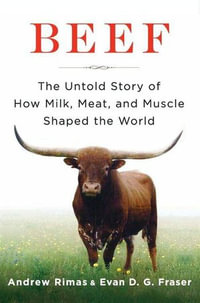
eTEXT
Identification and Control
The Gap between Theory and Practice
By: Ricardo S. SanchezPena, Joseba Quevedo Casin, Vicenc Puig Cayuela
eText | 28 June 2007 | Edition Number 1
At a Glance
eText
$159.01
or
Instant online reading in your Booktopia eTextbook Library *
Read online on
Desktop
Tablet
Mobile
Not downloadable to your eReader or an app
Why choose an eTextbook?
Instant Access *
Purchase and read your book immediately
Read Aloud
Listen and follow along as Bookshelf reads to you
Study Tools
Built-in study tools like highlights and more
* eTextbooks are not downloadable to your eReader or an app and can be accessed via web browsers only. You must be connected to the internet and have no technical issues with your device or browser that could prevent the eTextbook from operating.
ISBN: 9781846288999
ISBN-10: 1846288991
Published: 28th June 2007
Format: PDF
Language: English
Publisher: Springer Nature
Edition Number: 1
You Can Find This eBook In
Non-FictionEngineering & TechnologyIndustrial Chemistry & Manufacturing TechnologiesIndustrial ChemistryEnergy Technology & EngineeringElectrical EngineeringTechnology in GeneralEngineering in GeneralMechanical Engineering & MaterialsMechanical EngineeringElectronics & Communications EngineeringElectronics Engineering
This product is categorised by
- Non-FictionEngineering & TechnologyIndustrial Chemistry & Manufacturing TechnologiesIndustrial Chemistry
- Non-FictionEngineering & TechnologyEnergy Technology & EngineeringElectrical Engineering
- Non-FictionEngineering & TechnologyTechnology in GeneralEngineering in General
- Non-FictionEngineering & TechnologyMechanical Engineering & MaterialsMechanical Engineering
- Non-FictionEngineering & TechnologyElectronics & Communications EngineeringElectronics EngineeringAutomatic Control EngineeringRobotics
- Non-FictionSciencePhysicsClassical Mathematics
- Non-FictionEngineering & TechnologyEnvironmental SciencePollution Control
- Non-FictionEngineering & TechnologyEnvironmental Science























